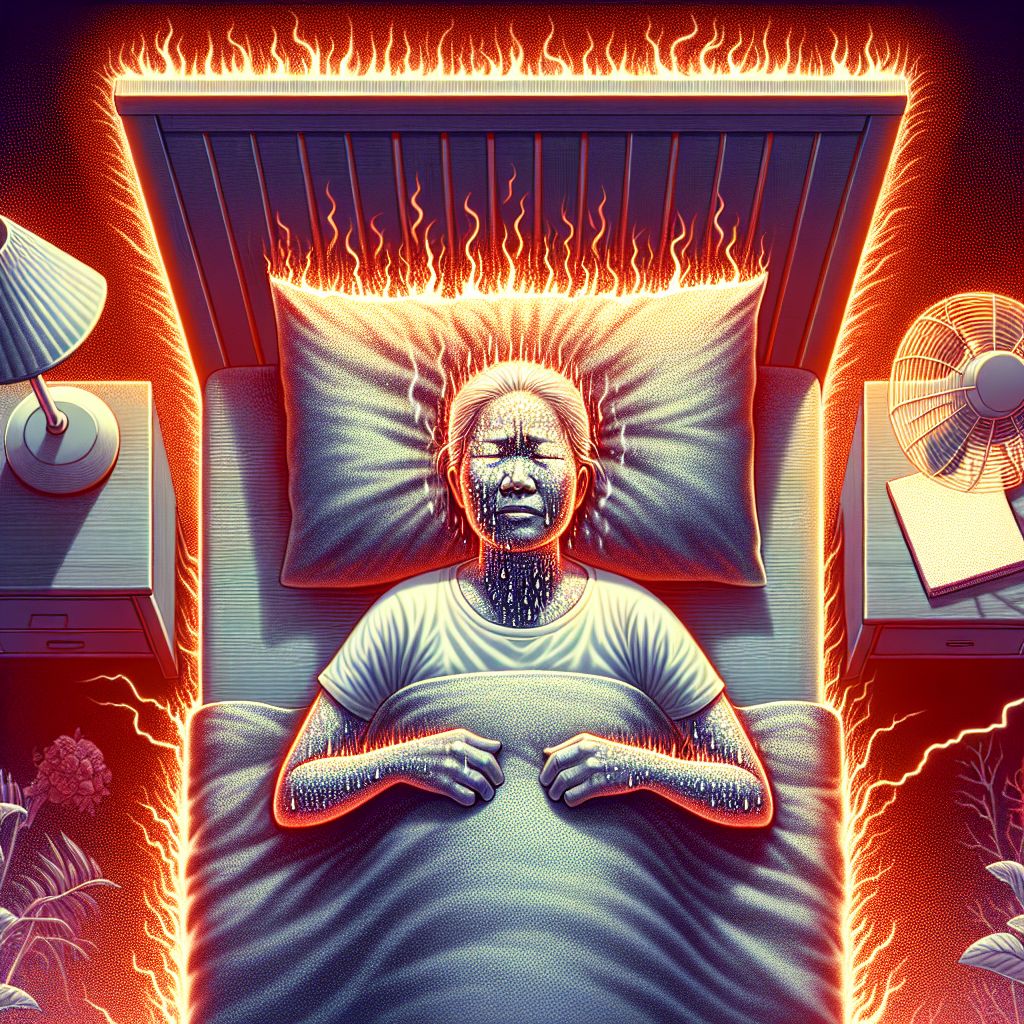Key Takeaways
- Optimal sleep temperature is typically between 60-67°F (15-19°C) for adults.
- Warm environments can help with falling asleep faster but might disrupt deep sleep stages.
- Cooler temperatures promote REM sleep, which is crucial for cognitive function and emotional regulation.
- Personal preferences and seasonal changes play a significant role in determining the ideal sleep temperature.
- Utilizing bedding and sleepwear strategically can enhance sleep quality by managing body temperature.
Choosing the Right Temperature for Quality Sleep
Temperature is a crucial factor in determining the quality of your sleep. You might not realize it, but the temperature of your bedroom can significantly impact how well you rest. Many of us have experienced tossing and turning on a hot summer night or shivering under the covers during winter. Therefore, finding the right balance is key to ensuring a good night’s sleep.
Most importantly, the ideal sleeping temperature can vary from person to person. However, research suggests that maintaining a bedroom temperature between 60-67°F (15-19°C) is optimal for most adults. This range helps your body maintain its natural temperature drop, which is essential for initiating sleep and cycling through its stages.
Besides that, it’s important to consider individual preferences and the specific needs of your body. Some people naturally run hot, while others feel cold easily. Therefore, adjusting your environment to suit your comfort level is crucial.
How Temperature Affects Sleep Stages
The sleep cycle consists of several stages, including light sleep, deep sleep, and REM sleep. Each stage plays a vital role in your overall health and well-being. Temperature can influence how smoothly you transition through these stages.
During the initial stages of sleep, your body temperature drops slightly. This drop is a natural part of the sleep process, signaling to your brain that it’s time to rest. Therefore, a cooler room can facilitate this natural decrease in body temperature, helping you fall asleep faster and more comfortably.
Most importantly, REM sleep, which is crucial for memory consolidation and emotional regulation, can be particularly sensitive to temperature changes. Cooler environments tend to promote more extended periods of REM sleep, contributing to better mental and emotional health.
Impact of Sleep Environment on Sleep Disorders
Temperature can also play a role in the management of certain sleep disorders. For instance, individuals with insomnia might find it harder to fall asleep in a warm room because their bodies struggle to reach the optimal temperature for sleep onset.
On the other hand, those suffering from conditions like sleep apnea might benefit from a cooler sleeping environment. Cool temperatures can help reduce inflammation and congestion, potentially improving breathing during sleep.
Therefore, if you’re dealing with sleep disorders, it might be worth experimenting with your bedroom temperature to see if it can help alleviate some symptoms. Keep in mind that while temperature is an important factor, it should be considered alongside other aspects of sleep hygiene, such as noise, light, and comfort.
Comparing Warm vs Cold Sleeping Preferences
When it comes to sleep preferences, some people swear by the warmth, while others can’t imagine sleeping without a cool breeze. Understanding these preferences can help you tailor your sleeping environment to your needs.
Warm sleepers might enjoy the feeling of coziness and security that comes with a heated room. They often find it easier to relax and drift off to sleep in a warmer environment. However, they should be cautious of overheating, which can disrupt sleep cycles.
On the other hand, cool sleepers often prioritize the refreshing and invigorating feeling of a cool room. They might benefit from improved REM sleep and reduced risk of overheating, but should ensure the temperature isn’t too cold to avoid discomfort.
Personal Preferences and Seasonal Changes
Your sleep temperature preference can also change with the seasons. During winter, you might prefer a warmer environment to combat the cold, while in summer, a cooler room can provide relief from the heat. It’s essential to adapt your sleep environment to these changes to maintain quality sleep year-round.
Health Considerations for Various Temperatures
The temperature you choose for your bedroom can have implications for your health. For instance, a warmer room might be beneficial for individuals with respiratory issues, as it can help reduce congestion and improve breathing.
Conversely, cooler temperatures can be advantageous for those looking to boost their metabolism or reduce inflammation. Cooler environments encourage your body to burn more calories to maintain its core temperature, which can be a subtle but effective way to support weight management.
However, it’s essential to consider any specific health conditions you might have and how temperature can impact them. Consult with a healthcare professional if you’re unsure about the best temperature for your needs.
Psychological and Emotional Factors
Your emotional state can also influence your sleep temperature preference. Some individuals find that a warm room provides comfort and security, which can be soothing for anxiety or stress. The feeling of warmth can mimic the sensation of being hugged, promoting a sense of calmness.
On the other hand, cooler temperatures can be refreshing and invigorating, helping to clear the mind and reduce mental clutter before sleep. This can be particularly beneficial for those who find it challenging to unwind at the end of the day.
Ultimately, the psychological and emotional factors at play will vary from person to person. It’s important to find a temperature that not only suits your physical needs but also supports your mental well-being.
Sleeping in a Warm Environment
Some people find comfort in a warm sleeping environment, especially during colder months. Warmth can provide a sense of security and relaxation, making it easier to drift off to sleep. However, it’s important to strike a balance to ensure the warmth doesn’t become counterproductive. For more insights on the ideal sleeping temperature, you can read this article.
Warmth and the Process of Falling Asleep
Warm environments can facilitate the process of falling asleep by relaxing your muscles and reducing tension. This can be particularly beneficial for individuals who experience stress or anxiety at bedtime. The cozy feeling of warmth can mimic the sensation of being wrapped in a hug, promoting relaxation.
However, it’s essential to avoid excessive heat, which can lead to restlessness and discomfort. Overheating during sleep can disrupt your natural sleep cycle and lead to frequent awakenings.

Sleeping in a Cold Environment
Potential Downsides to Cold Sleeping
While sleeping in a cooler environment can have its benefits, there are potential downsides to consider. For instance, if the room is too cold, it might lead to discomfort or difficulty falling asleep. This is especially true for individuals who naturally feel cold.
Moreover, extremely cold temperatures can cause muscle stiffness and joint pain, particularly in those with arthritis or similar conditions. Therefore, it’s crucial to find a balance that keeps you comfortable without being too cold. Obviously both images used are extremes!

Tips for Keeping Your Bedroom Cool
Keeping your bedroom cool doesn’t have to be a daunting task. There are several simple steps you can take to create a comfortable sleeping environment. Here are some tips that can help:
- Use fans or air conditioning: These are the most straightforward ways to regulate the temperature. Adjust the settings to maintain a cool and consistent climate.
- Close blinds or curtains: During the day, keep your blinds or curtains closed to block out sunlight and prevent your room from heating up.
- Opt for breathable bedding: Use lightweight, breathable sheets and blankets made from materials like cotton or bamboo to keep cool at night.
- Consider a cooling mattress pad: These pads can help regulate your body temperature by providing a cool surface to sleep on.
Improving Sleep Quality with Optimal Temperature Management
To enhance your sleep quality, it’s crucial to manage your bedroom temperature effectively. By understanding your personal preferences and the impact of temperature on sleep, you can create an environment that promotes restful and rejuvenating sleep.
Begin by assessing your current sleep environment and identifying any areas for improvement. Consider factors such as room insulation, bedding materials, and the presence of electronic devices that may generate heat.
Strategies for Adjusting Room Temperature
There are several strategies you can employ to adjust your room temperature and create the ideal sleeping environment:
- Invest in a programmable thermostat: This allows you to set your desired temperature and maintain it consistently throughout the night.
- Use natural ventilation: Open windows or doors to allow fresh air to circulate, especially during cooler nights.
- Seal drafts: Ensure that windows and doors are properly sealed to prevent cold air from entering and warm air from escaping.
Utilizing Bedding and Sleepwear for Temperature Control
Your choice of bedding and sleepwear can significantly impact your sleep temperature. Opt for materials that help regulate your body temperature and keep you comfortable throughout the night.
For bedding, consider using layers that can be easily adjusted according to your needs. Lightweight blankets and breathable sheets are ideal for warmer months, while thicker comforters can provide warmth during colder seasons.
When it comes to sleepwear, choose fabrics that wick away moisture and allow your skin to breathe. Natural fibers like cotton and bamboo are excellent choices, as they help regulate temperature and prevent overheating.
By combining these strategies, you can create a sleep environment that supports your body’s natural temperature regulation, leading to more restful and restorative sleep.
Leveraging Technology for Temperature Regulation
Technology can be a game-changer when it comes to maintaining the ideal sleep temperature. Devices like smart thermostats and sleep trackers can help you optimize your environment for better rest. A smart thermostat allows you to set specific temperatures for different times of the day, ensuring your bedroom is at the perfect temperature when it’s time to sleep.
Additionally, sleep trackers can monitor your body temperature and provide insights into how temperature changes affect your sleep patterns. Some advanced models even adjust your room temperature automatically based on your preferences and sleep stages.
Conclusion: Finding Your Sweet Spot for Optimal Sleep
Finding the right sleep temperature is a personal journey that involves understanding your body’s needs and preferences. By experimenting with different temperatures and using technology to your advantage, you can create a sleep environment that promotes restful and rejuvenating sleep.
Remember, the key is to strike a balance that keeps you comfortable without overheating or feeling too cold. Consider the impact of temperature on your sleep stages, and make adjustments to your bedding, sleepwear, and room settings as needed.
Experimenting with Temperature for Better Rest
Don’t be afraid to experiment with different temperatures to find what works best for you. Start by adjusting your thermostat by a few degrees and observing how it affects your sleep quality. Pay attention to how you feel in the morning and whether you notice any improvements in your mood or energy levels.
What works for you in the winter can be completely the opposite as the outside temperatures rise, and you may need to swap one sleep aid for another.
For instance – in the winter months I enjoy sleeping on a luxury warm mattress cover, but in the summer I swap that out for (don’t laugh) a pet cooler mattress for a large labrador to sleep on.
It’s also helpful to keep a sleep journal to track changes and identify patterns. Note any changes in your sleep environment, such as the introduction of a new fan or bedding, and how they impact your sleep. For more insights on how temperature affects sleep, you can read about the link between sleep temperature and overall sleep quality.
Ultimately, the goal is to find a temperature that supports your body’s natural rhythms and helps you achieve the restorative sleep you need to thrive.

Frequently Asked Questions (FAQ)
Temperature is a key factor in sleep quality, and many people have questions about how to manage it effectively. Here are some common questions and answers to help you optimize your sleep environment.
What is the ideal temperature for sleeping?
The ideal temperature for sleeping is generally between 60-67°F (15-19°C) for adults. This range supports the natural drop in body temperature that occurs during sleep and helps facilitate the transition through various sleep stages.
Why do I wake up when my room is too hot or cold?
Waking up in the middle of the night due to temperature fluctuations can occur because your body struggles to maintain its optimal temperature for sleep. Overheating can disrupt your sleep cycle, while being too cold can cause discomfort and restlessness.
Can temperature affect my dreams?
Yes, temperature can influence the vividness and frequency of dreams. Cooler temperatures tend to promote longer periods of REM sleep, which is when most dreaming occurs. Therefore, maintaining a cooler room can enhance dream quality and recall.
How can I keep my room cool in the summer?
To keep your room cool during the summer, use fans or air conditioning to maintain a comfortable temperature. Keep blinds or curtains closed during the day to block out heat, and use lightweight, breathable bedding to stay cool at night.
Additionally, consider using a cooling mattress pad or breathable sleepwear to regulate your body temperature.
Is it bad to sleep with a fan on all night?
Sleeping with a fan on can be beneficial for maintaining a cool and comfortable sleep environment. However, it’s important to ensure the fan is not blowing directly on you, as this can cause dryness or irritation. Adjust the fan’s position or speed to create a gentle airflow that enhances comfort without causing discomfort.
